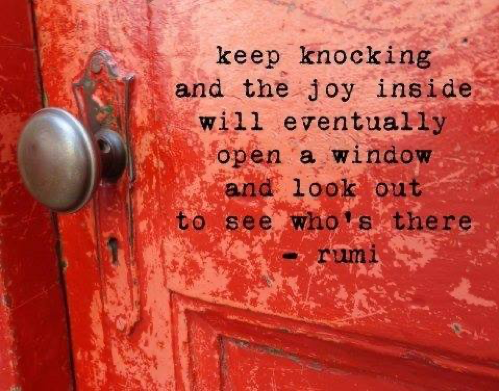I’m usually really good at math, and I miscounted in the last blog on a resilient spirit 🙄. That should have been listed as the third of the ten guideposts for Wholehearted living from Brené Brown’s Daring Greatly, (2012, p. 9). Seems I am not tracking things as well, living in this new environment of social distancing, and wearing a mask and gloves to go into public places like grocery stores and the post office. Perhaps you are also finding yourself more distracted, stressed, and/or more fatigued than usual with the rapid changes we’ve had to make in our lives in a short amount of time – working from home or not working, home-schooling children, taking care of ourselves and others in different ways. If so, this fourth guidepost for Wholehearted living might serve as a bit of balm for your mind and soul: “Gratitude and Joy – Letting go of scarcity and fear of the dark”.
Scarcity
Scarcity is the sense of not being enough and/or not having enough – and its properties are shame, comparison, and disengagement (Brené Brown, Daring Greatly, 2012, p. 116). We can easily shift into a scarcity mindset when resources are limited, and we are fearful about not being able to get what we need. The lack of and purchase limits on toilet paper, wipes, and bleach in grocery stores seems to be a sign of a widespread scarcity mindset. We are scared of getting sick with the Coronavirus or giving it to others unknowingly. We are scared of not being able to see or hug our loved ones, family, and friends again. We also experience scarcity when we compare ourselves to others and come up short in our own eyes. And when we don’t feel we are enough or have enough, we often disengage. We withdraw, hide, and disconnect so that others don’t see our “not-enoughness” and we don’t feel it as keenly.
Scarcity and fear are normal human experiences that get exacerbated in times like these – where change occurs rapidly and unpredictably. A natural reaction is grasping onto whatever we can that gives us a sense of comfort, safety, “enoughness” (e.g., toilet paper or other resources, like amassing a shoe collection even Imelda Marcos would envy 😳). When we notice a scarcity mindset at work, practicing gratitude can bring back a sense of “enough” and help us connect with joy.
Gratitude
“Gratitude is not a passive response to something we have been given, gratitude arises from paying attention, from being awake in the presence of everything that lives within and without us.” (David Whyte, Consolations, 2018, p. 89). When we are in a scarcity mindset, we are living in the gap, and our attention on that expands our awareness of that gap. If, instead, we focus on what we have and acknowledge the gift of the moment before us, that is the awareness that grows. We have the power to choose the meaning we make of our experiences.
Gratitude doesn’t just happen – we need to practice seeing life through that lens. As we focus on gratitude and seeing our experiences in that way – in the way of “enoughness” (being enough and having enough) – our brains come to expect more of that, and a self-reinforcing loop kicks in. Taking in the good (Rick Hanson, Ph.D.) builds and strengthens the neural connections and circuitry associated with gratitude.
Joy
Gratitude practice is not about dismissing difficult emotions such as confusion, sadness, anger, or fear. Rather, it provides us with the opportunity to welcome all that we are feeling and experiencing, including joy. Joy can be discovered in a number of ways. We can recall a favorite song or a happy memory. We can turn on some energizing music and dance. We can turn our attention to what is delighting our senses (Mindful, 2019) – sights (colors, shapes, patterns), sounds (raindrops on the roof, birds singing, music, voices of those we love), tastes and smells (food on the grill, fresh baked cookies, an orange just peeled, freshly mown grass), and touch (the weight and texture of an object in our hand, the clothes on our skin, a chair holding us, the sun on our skin, wind in our hair, sand between our toes). “Joy is a meeting place, of deep intentionality and of self forgetting… the sheer intoxicating beauty of the world inhabited as an edge between what we previously thought was us and what we thought was other than us” (David Whyte, Consolations, p. 127). Joy is connecting with the whole of our experience, of holding the light and the dark simultaneously, of “both and” rather than “either or” separation.
Joy is an organic by-product of gratitude practice and both are a function of being present.
Letting Go of Scarcity and Fear
When we choose to be grateful and to let in joy, we are letting go of scarcity and fear. We are not ignoring the latter, we acknowledge scarcity and fear when they are present in our experience, and we choose to focus our attention on gratitude and joy. We recognize:
- the potential of the present moment and the power of choice in how we experience it
- the people, the connections, the relationships that enrich our lives
- the beauty of nature that delights the soul – flowers blooming, birds singing, stars in the night sky
- the knowledge and wisdom we have acquired and the ability to use that for good
- the capacity to feel our emotions – the full range of them, including grief and joy
- the physical resources available to us – shelter, food, clothing, tools, one roll of toilet paper, etc.
- that death is part of the same cycle as birth and life isn’t full or whole without both
- the opportunities we have to help others, and to continue to learn and grow as human beings – especially the opportunities that are challenging, including failure – those are the opportunities from which we can learn the most. And, every moment is a practice opportunity (to echo the admonition of a wise and beloved teacher – Doug Silsbee)!
Gratitude Practice
Gratitude is said to be “the mother of virtues” because it has the power to transform three things: our past, our present, and our future (Hardy, Gapingvoid, 2018). The good news is that gratitude is easy to practice and transformation is possible! Here are a few ways:
- First, pause to be present in the moment so it doesn’t slip by without noticing it.
- Consider the situation and be curious. Ask: What is the unique opportunity of this moment?
- Then take advantage of the opportunity – do something with it. Make the most of it or make what we can of it. Be creative, use resources available, internal or external, to make a difference, to help someone and sometimes that someone is us.
Other gratitude practices include:
- When we awaken and/or before we go to sleep at night, we can make a list of three things (people, events, experiences, places, etc.) in our past or present for which we are grateful. If we write them down (e.g., in a journal), this reinforces the gratitude.
- We can thank our partners, family members, friends, neighbors, colleagues, and even strangers for who they are in our lives (transforming the present), or something they did, some kindness they showed us, or something we learned from them (transforming our past and their present).
- We can, when challenged, focus on our capacity, rather than our circumstances. Challenges present us with opportunities to be resourceful. We can also focus on how we want to rise to the occasion and what we want to create – transforming our future in a positive way.
What gratitude practice will you experiment with?
What can you do to allow more joy into this day?
I’d love to hear what you are experimenting with in your gratitude practice – feel free to share it with me by email to: tinageithner@me.com and enjoy Entertaining an Idea!
Resources
Brown, Brené (2012). Daring Greatly: How the Courage to Be Vulnerable Transforms the Way We Live, Love, Parent, and Lead. New York, NY: Gotham Books.
Hardy, Benjamin. We all know gratitude IS the mother of virtues. Here’s why. Gapingvoid, 2018. With gratitude, anything is possible: art@gapingvoid.com
Mindful: Open Up to Gratitude. newslettter@mindful.org December 12, 2019.
On Being with Krista Tippett: interview with David Steindl-Rast: “How to Be Grateful in Every Moment (But Not for Everything)”.
The On Being Project. Kristin Lin, Editor. The Pause: Gratefulness in three steps (newsletter@onbeing.org)..
Whyte, David (2018). Gratitude. Joy. Consolations: The Solace, Nourishment and Underlying Meaning of Everyday Words. Langley, WA: Many Rivers Press, pp. 89-91, 127-128.




